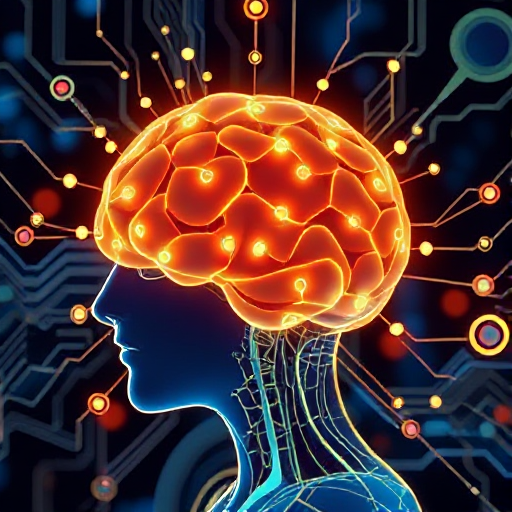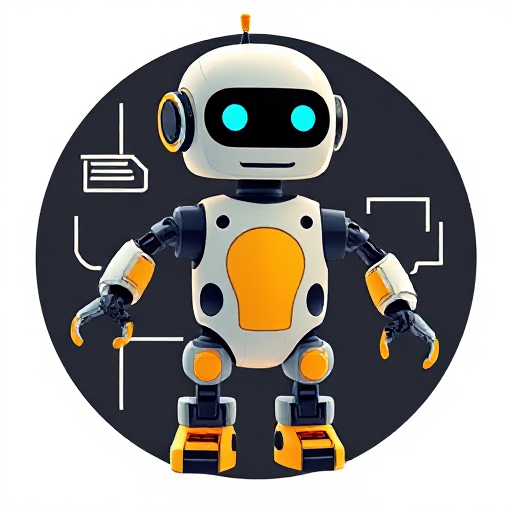
Artificial Intelligence (AI) is one of the most transformative technologies of our time, and it is poised to revolutionize industries across the globe. Whether you’re looking to start a career in AI, enhance your existing skill set, or simply gain a deeper understanding of the field, learning AI can be both exciting and challenging. This guide will provide you with a step-by-step approach on how to begin your AI learning journey, regardless of your background.
1. Understand What Artificial Intelligence Is
Before diving into learning AI, it’s crucial to understand what AI is and what it entails. Artificial Intelligence refers to the simulation of human intelligence in machines that are programmed to think, reason, and solve problems. AI is divided into several subfields, including:
- Machine Learning (ML): Algorithms that enable machines to learn from data and improve over time.
- Natural Language Processing (NLP): Understanding and processing human languages, enabling interactions between computers and humans.
- Computer Vision: Enabling machines to interpret and make decisions based on visual inputs.
- Robotics: Combining AI and physical machines to perform tasks autonomously.
- Expert Systems: Programs that emulate decision-making abilities of human experts.
2. Develop a Strong Foundation in Mathematics
AI is built on a solid foundation of mathematics, so it’s essential to strengthen your skills in these areas:
- Linear Algebra: Used for working with data and transformations in machine learning and neural networks.
- Calculus: Helps in understanding how algorithms adjust themselves during training (gradient descent, for example).
- Probability and Statistics: Key for understanding uncertainty, making predictions, and interpreting data in machine learning models.
- Discrete Mathematics: Helps with logic, sets, and graphs, all important for algorithms and data structures.
If you’re not already comfortable with these subjects, start by reviewing relevant textbooks or online courses in mathematics for machine learning.
3. Learn Programming, Especially Python
Programming is essential in AI development, and Python is the most widely used language in the field. Python’s simplicity and the vast array of libraries available (such as NumPy, pandas, and TensorFlow) make it ideal for AI tasks. Here’s how to start:
- Basic Python Syntax: Learn the fundamentals of Python, including variables, control structures, functions, and object-oriented programming.
- Libraries for AI and Machine Learning: Familiarize yourself with libraries such as NumPy (for numerical computations), pandas (for data analysis), and Matplotlib (for data visualization).
- Deep Learning Frameworks: Gain knowledge of machine learning and deep learning frameworks like TensorFlow, Keras, and PyTorch. These frameworks allow you to build and train neural networks and other AI models.
4. Start with Machine Learning Basics
Once you have the programming skills and mathematical foundation, it’s time to dive into machine learning, the heart of AI. Start with these steps:
- Supervised Learning: This is the most common type of machine learning where models are trained on labeled data. Learn about algorithms such as linear regression, decision trees, k-nearest neighbors, and support vector machines.
- Unsupervised Learning: Here, algorithms work with unlabeled data to find hidden patterns or groupings. Start with clustering algorithms like k-means and hierarchical clustering, as well as dimensionality reduction techniques like PCA (Principal Component Analysis).
- Reinforcement Learning: This involves training models to make decisions by rewarding them for correct actions and penalizing them for mistakes. It’s widely used in game theory and robotics.
Online platforms like Coursera, edX, and Udacity offer great introductory courses on machine learning. Look for courses by reputable institutions, such as Stanford’s machine learning course taught by Andrew Ng.
5. Explore Deep Learning
Deep learning is a subset of machine learning that uses artificial neural networks to model complex patterns in large datasets. Neural networks are inspired by the human brain, and they are behind some of the most impressive AI applications like image recognition, language translation, and autonomous driving.
To get started with deep learning:
- Learn About Neural Networks: Understand the basic architecture of neural networks, including layers (input, hidden, and output), activation functions, and backpropagation.
- Convolutional Neural Networks (CNNs): These are particularly useful for image and video analysis. Study CNNs for image classification tasks.
- Recurrent Neural Networks (RNNs): These are used for tasks involving sequential data, such as time series forecasting and natural language processing.
- Autoencoders and Generative Adversarial Networks (GANs): These advanced techniques are used for unsupervised learning and generating synthetic data.
6. Delve into Specialized Areas of AI
AI is a broad field with many sub-disciplines. Depending on your interests, you can specialize in areas such as:
- Natural Language Processing (NLP): Learn how machines understand and generate human language. Key techniques include tokenization, part-of-speech tagging, named entity recognition, and transformers.
- Computer Vision: This involves teaching machines to interpret visual information. Techniques include image classification, object detection, segmentation, and facial recognition.
- Robotics: Study how AI is used to control robots for tasks ranging from simple movements to complex autonomous navigation.
Courses and tutorials dedicated to these fields are available on platforms like Udacity, DataCamp, and Fast.ai.
7. Work on Real-World Projects
Theory is important, but hands-on experience is crucial for mastering AI. Here are some ways to build practical skills:
- Kaggle Competitions: Kaggle is a platform for data science competitions. Participate in AI challenges to work on real-world datasets and improve your skills.
- Build Projects: Create your own AI models and applications. Some beginner-friendly projects include spam classifiers, image recognition systems, recommendation engines, or chatbots.
- Collaborate with Others: Join AI-focused communities like those on GitHub or LinkedIn to collaborate on open-source projects and contribute to ongoing research.
Working on these projects will help you refine your understanding and develop a portfolio that can be showcased to potential employers or collaborators.
8. Stay Updated and Keep Learning
AI is a rapidly evolving field, and new techniques, tools, and research are emerging all the time. Here’s how you can stay up-to-date:
- Research Papers: Reading academic papers on AI and machine learning will help you understand the cutting-edge developments in the field. Websites like arXiv and Google Scholar are excellent resources.
- AI News and Blogs: Follow AI news sources, blogs, and industry leaders on platforms like Medium and Towards Data Science.
- Conferences and Meetups: Attend AI conferences such as NeurIPS, CVPR, or ICML, and participate in local AI meetups to network with professionals in the field.
9. Pursue Formal Education (Optional)
If you’re looking for a more structured path, pursuing formal education in AI can be an excellent option. Many universities and institutions offer undergraduate, graduate, and certification programs in AI, data science, or machine learning. Some of the top online learning platforms also offer certification programs that can give you credentials in the AI space.
Learning AI is an exciting journey that requires commitment, curiosity, and persistence. Start by building a strong foundation in mathematics, programming, and machine learning concepts. As you progress, explore deep learning, specialized areas, and work on real-world projects to build practical experience. Finally, stay updated on the latest advancements to ensure that your knowledge remains relevant.
AI has the potential to change the world, and by starting your learning journey today, you can be part of this transformative revolution.






